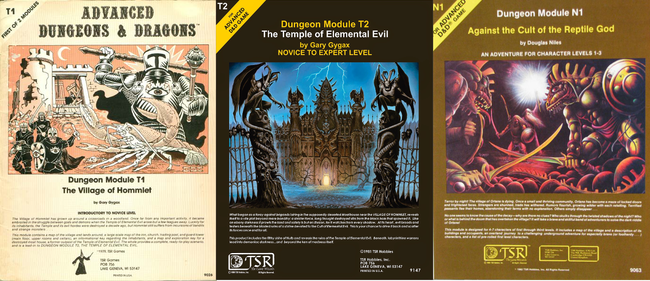I’m Going on an Adventure!
This blog has been gathering dust for the past few weeks, but not for lack of caring. Instead, I’m very proud to announce my latest project: I’m writing an unofficial adventure module for 5th edition D&D games! It’s tentatively titled The Temple of Shattered Minds.
As a gamer, a writer, and an actor, I love to lavish detail on characters. I find character-driven stories to be much more personal and engaging than event-driven ones. Unfortunately, I’ve found that most D&D adventures, like the recently-published Hoard of the Dragon Queen, are of the latter variety. I want to prove that “story gaming” can exist outside the context of rules-light games like Spirit of the Century and narrative, GM-less games like Fiasco. That’s a worthy goal already, but I want to push that belief even farther. I believe that a story-driven gaming experience can be created even within the context of an old-school D&D adventure like The Village of Hommlet or Against the Cult of the Reptile God.
The three act structure of a classic D&D module is simple. The player characters discover a mystery in a small village—then adventure through the wilderness to get to a dungeon—then finally defeat the evil monsters inside the dungeon. These three acts are designed to highlight the three pillars of D&D gameplay—interaction, exploration, and combat—but it parallels nicely with the three act structure of classic storytelling. It’s a format that a lot of DMs employ (sometimes intentionally, often unconsciously) when creating adventures for their players. This is where published adventures falter; they’re written to be as generic as possible, in order to be plugged seamlessly into anyone’s D&D game. Because these adventures are so generic, it takes me more time to read and rewrite an adventure for use in my home game than it would take for me to create one myself.
These are my design goals for The Temple of Shattered Minds:
- Create an adventure that follows an “old-school” three-act structure similar to Against the Cult of the Reptile God.
- Create a villain whose motivations are deeper than a desire to dominate or to gain ultimate power. The villain is half of the character-driven plot.
- Create a dungeon that naturally reveals the villain’s motivations and character through sensory description, rather than through exposition or hearsay.
- Create a “campaign mode” that allows the adventure to generically fit any adventuring party or campaign setting.
- Create a “story mode” or “one-shot mode” that features pre-generated characters with story ties to the adventure location, but still allows players to make meaningful choices.
- Avoids a completely linear “railroad” plot.
This module’s story mode is what will set it apart from other D&D adventures. Typically, the main characters of a published module are a band of traveling do-gooders (or do-Chaotic-Neutralers). Like the heroes of a classic western, they ride into town, solve the problem, and ride off into the sunset. These stories are exciting, but it often feels like the traveling PCs have no real reason to be helping the townsfolk, other than the promise of a reward. This motivation is good enough for many D&D players (it’s stuck around this long), but it’s a weak dramatic choice. In these adventures, the story doesn’t matter, it’s just a device to get four players around a table. If the player characters ever got in over their heads, they would quickly realize that the reward isn’t worth the risk, and particularly callous PCs would probably leave the poor villagers of Orlane or Hommlet to die.
There’s little I can do to help fit already-existing PCs into the story of the Temple, but the module’s story mode will create a pick-up-and-play experience that no other published adventure can provide.
If you’re interested in helping me playtest this module once I release a first draft, please send me an email at joeyhaeck@gmail.com. Thanks so much for your support on what I hope is the beginning of a great new adventure!
Temple illustration by: http://arisuonpaa.deviantart.com/


